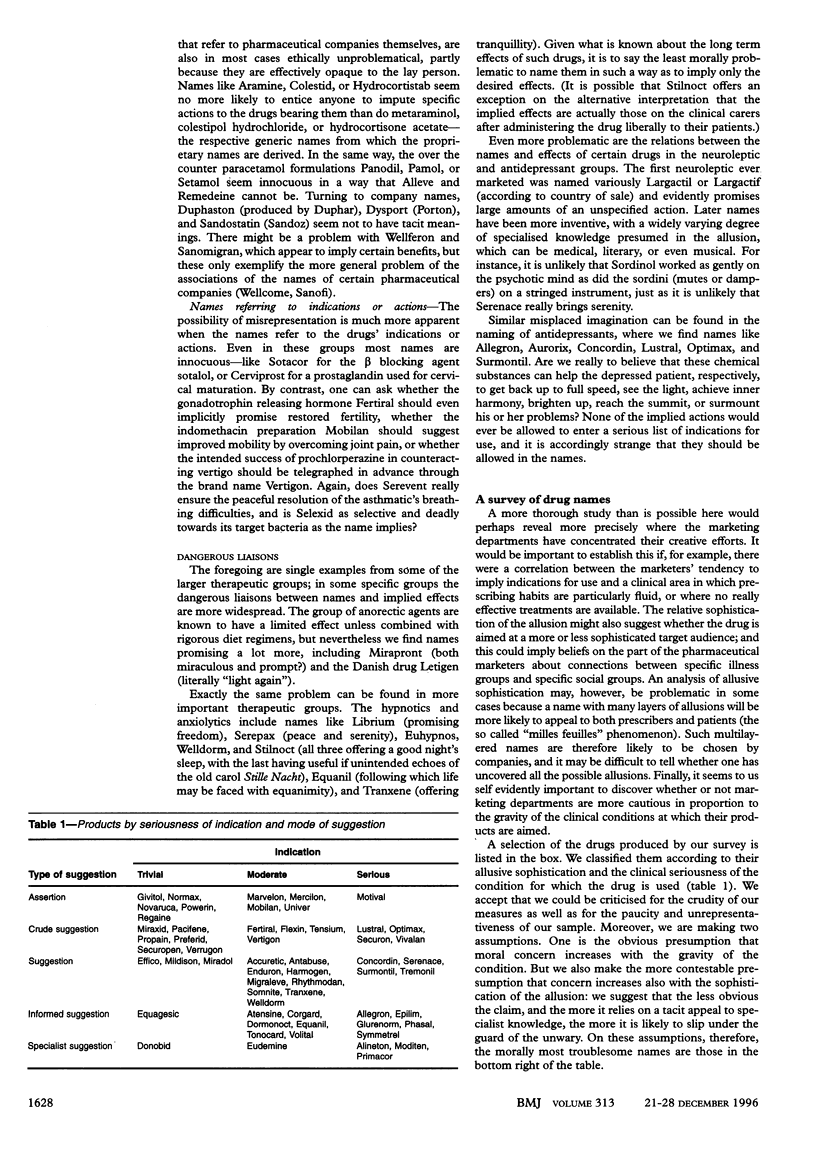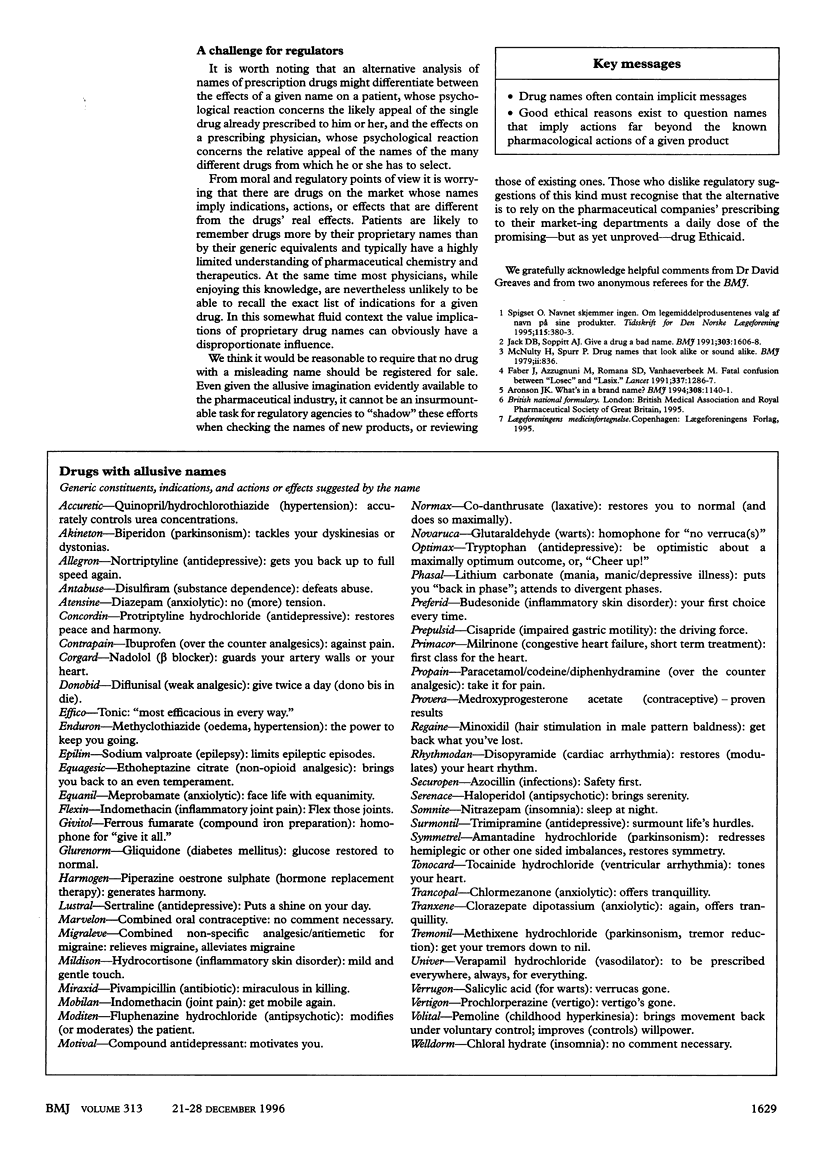Abstract
OBJECTIVES: To analyse the explicit or implicit claims embodied in the proprietary names of pharmaceutical products. DESIGN: Linguistic and ethical analysis of proprietary names of pharmaceutical products marketed in the UK and in Denmark. RESULTS AND CONCLUSIONS: A number of drugs have names that allude to their indication or actions. Such names may be problematic, however, because they often promise more than the drug can deliver. Taking into account, firstly, the type of allusion and its degree of sophistication, and, secondly, the seriousness of the indication may help in identifying the most problematic drug names.
Full text
PDF


Selected References
These references are in PubMed. This may not be the complete list of references from this article.
- Aronson J. K. What's in a brand name? BMJ. 1994 Apr 30;308(6937):1140–1141. doi: 10.1136/bmj.308.6937.1140. [DOI] [PMC free article] [PubMed] [Google Scholar]
- Faber J., Azzugnuni M., Di Romana S., Vanhaeverbeek M. Fatal confusion between 'Losec' and 'Lasix'. Lancet. 1991 May 25;337(8752):1286–1287. doi: 10.1016/0140-6736(91)92954-z. [DOI] [PubMed] [Google Scholar]
- Jack D. B., Soppitt A. J. Give a drug a bad name. BMJ. 1991 Dec 21;303(6817):1606–1608. doi: 10.1136/bmj.303.6817.1606. [DOI] [PMC free article] [PubMed] [Google Scholar]
- McNulty H., Spurr P. Drug names that look or sound alike. Br Med J. 1979 Oct 6;2(6194):836–836. doi: 10.1136/bmj.2.6194.836. [DOI] [PMC free article] [PubMed] [Google Scholar]
- Spigset O. Navnet skjemmer ingen. Om legemiddelprodusentenes valg av navn på sine produkter. Tidsskr Nor Laegeforen. 1995 Jan 30;115(3):380–383. [PubMed] [Google Scholar]


